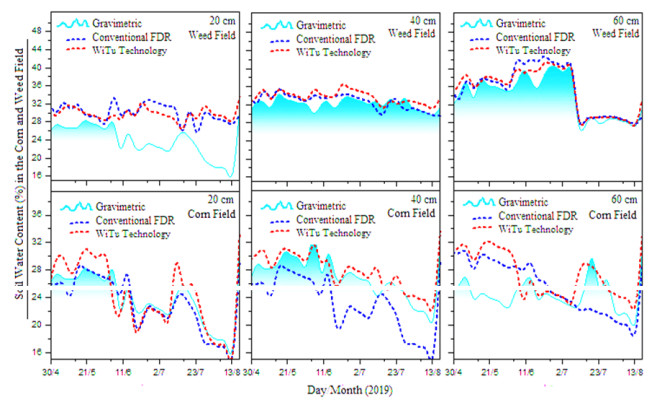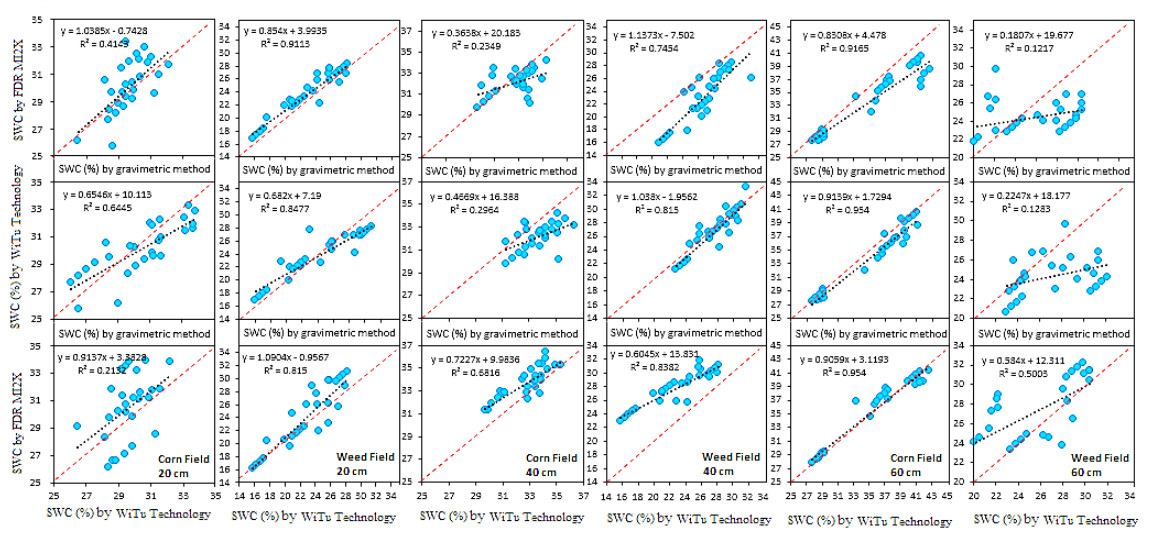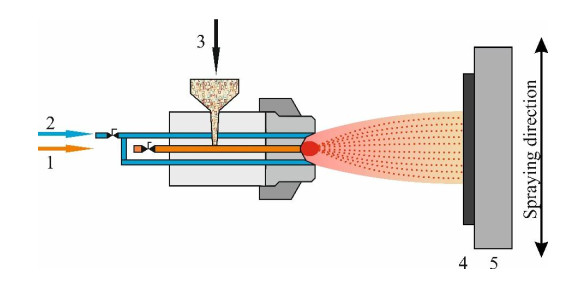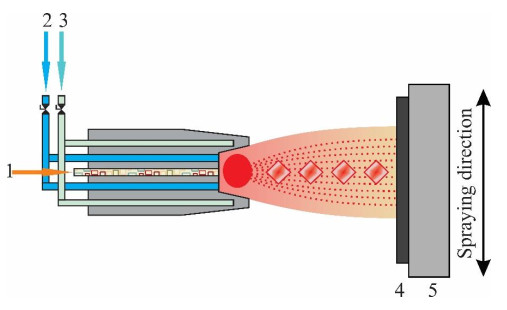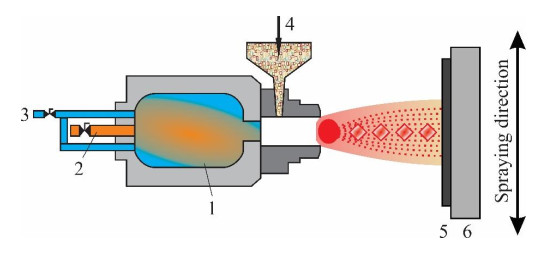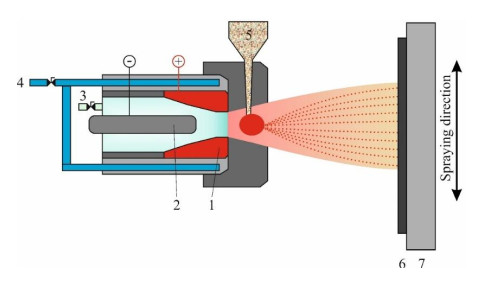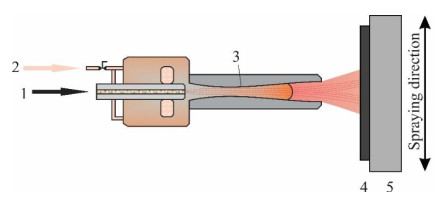|
[1]
|
Martin PM (2010) Handbook of Deposition Technologies for Films and Coatings: Science, Applications and Technology, 3 Eds., Elsevier.
|
|
[2]
|
Ganesh VA, Raut HK, Nair AS, et al. (2011) A review on self-cleaning coatings. J Mater Chem 21: 16304–16322. doi: 10.1039/c1jm12523k

|
|
[3]
|
Fenker M, Balzer M, Kappl H (2014) Corrosion protection with hard coatings on steel: Past approaches and current research efforts. Surf Coat Tech 257: 182–205. doi: 10.1016/j.surfcoat.2014.08.069

|
|
[4]
|
Grun R (1995) Combination of different plasma-assisted processes with pulsed d.c.: cleaning, nitriding and hardcoatings. Surf Coat Tech 74–75: 598–603.
|
|
[5]
|
Montemor MF (2014) Functional and smart coatings for corrosion protection: A review of recent advances. Surf Coat Tech 258: 17–37. doi: 10.1016/j.surfcoat.2014.06.031

|
|
[6]
|
Kapridaki C, Pinho L, Mosquera MJ, et al. (2014) Producing photoactive, transparent and hydrophobic SiO2-crystalline TiO2 nanocomposites at ambient conditions with application as self-cleaning coatings. Appl Catal B-Environ 156: 416–427.
|
|
[7]
|
Nazeer AA, Madkour M (2018) Potential use of smart coatings for corrosion protection of metals and alloys: A review. J Mol Liq 253: 11–22. doi: 10.1016/j.molliq.2018.01.027

|
|
[8]
|
Jansen JC, Koegler JH, van Bekkum H, et al. (1998) Zeolitic coatings and their potential use in catalysis. Micropor Mesopor Mat 21: 213–226. doi: 10.1016/S1387-1811(97)00061-9

|
|
[9]
|
Lejars M, Margaillan A, Bressy C (2012) Fouling release coatings: A nontoxic alternative to biocidal antifouling coatings. Chem Rev 112: 4347–4390. doi: 10.1021/cr200350v

|
|
[10]
|
Tetault N, Gbaguidi-Haore H, Bertrand X, et al. (2012) Biocidal activity of metalloacid-coated surfaces against multidrug-resistant microorganisms. Antimicrob Resist In 1: 35.
|
|
[11]
|
Coombs A, Lindenmo M, Snell D, et al. (2001) Review of the types, properties, advantages, and latest developments in insulating coatings on nonoriented electrical steels. IEEE T Magn 37: 544–557. doi: 10.1109/20.914376

|
|
[12]
|
Huang X (2009) High temperature radiation heat transfer performance of thermal barrier coatings with multiple layered structures. J Eng Gas Turb Power 131: 011301. doi: 10.1115/1.2967495

|
|
[13]
|
Cheruvu NS, Wei R, Gandy DW (2010) Influence of thermal exposure on the stability of metastable microstructures of sputter deposited nanocrystalline 304 and 310 stainless steel coatings. Surf Coat Tech 205: 1211–1219. doi: 10.1016/j.surfcoat.2010.10.035

|
|
[14]
|
Huang XX, Sun SC, Lu SD, et al. (2018) Synthesis and characterization of oxidation-resistant TiB2 coating on molybdenum substrate by chemical vapor deposition. Mater Lett 228: 53–56. doi: 10.1016/j.matlet.2018.05.080

|
|
[15]
|
Pascu A, Stanciu EM, Roata IC, et al. (2017) Influence of the Laser Cladding. Parameters and Solar Heat Treatment on the Properties of Biocompatible Inconel 718 Coatings. Rev Rom Mater 47: 157–165.
|
|
[16]
|
Stanciu EM, Pascu A, Tierean MH, et al. (2016) Dual Coating Laser Cladding of NiCrBSi and Inconel 718. Mater Manuf Process 31: 1556–1564. doi: 10.1080/10426914.2015.1103866

|
|
[17]
|
Sudagar J, Lian JS, Sha W (2013) Electroless nickel, alloy, composite and nano coatings-A critical review. J Alloy Compd 571: 183–204. doi: 10.1016/j.jallcom.2013.03.107

|
|
[18]
|
Assadi H, Kreye H, Gartner F, et al. (2016) Cold spraying-A materials perspective. Acta Mater 116: 382–407. doi: 10.1016/j.actamat.2016.06.034

|
|
[19]
|
Sivakumar G, Banerjee S, Raja VS, et al. (2018) Hot corrosion behavior of plasma sprayed powder-solution precursor hybrid thermal barrier coatings. Surf Coat Tech 349: 452–461. doi: 10.1016/j.surfcoat.2018.06.021

|
|
[20]
|
Szymanski K, Hernas A, Moskal G, et al. (2015) Thermally sprayed coatings resistant to erosion and corrosion for power plant boilers-A review. Surf Coat Tech 268: 153–164. doi: 10.1016/j.surfcoat.2014.10.046

|
|
[21]
|
Roata IC, Pascu A, Croitoru C, et al. (2017) Thermal Spraying of CuAlFe Powder on Cu5Sn Alloy. IOP Conf Ser Mater Sci Eng 209: 012042. doi: 10.1088/1757-899X/209/1/012042

|
|
[22]
|
Vaßen R, Jarligo MO, Steinke T, et al. (2010) Overview on advanced thermal barrier coatings. Surf Coat Tech 205: 938–942. doi: 10.1016/j.surfcoat.2010.08.151

|
|
[23]
|
Karthikayan S, Ganesan S, Vasanthakumar P, et al. (2017) Innovative Research Trends in the Application of Thermal Barrier Metal Coating in Internal Combustion Engines. Mater Today Proc 4: 9004–9012. doi: 10.1016/j.matpr.2017.07.253

|
|
[24]
|
Kosevic M, Stopic S, Cvetkovic V, et al. (2019) Mixed RuO2/TiO2 uniform microspheres synthesized by low-temperature ultrasonic spray pyrolysis and their advanced electrochemical performances. Appl Surf Sci 464: 1–9. doi: 10.1016/j.apsusc.2018.09.066

|
|
[25]
|
Brupbacher MC, Zhang DJ, Buchta WM, et al. (2018) Experimental characterization and physics-based modeling of the temperature-dependent diffuse reflectance of plasma-sprayed Nd2Zr2O7 in the near to short-wave infrared. Appl Optics 57: 7782–7792. doi: 10.1364/AO.57.007782

|
|
[26]
|
Jing MX, Li J, Liu KG (2018) Research progress in photolectric materials of CuFeS2. IOP Conf Ser Earth Environ Sci 128: 012087. doi: 10.1088/1755-1315/128/1/012087

|
|
[27]
|
Heimann RB (2006) Thermal spraying of biomaterials. Surf Coat Tech 201: 2012–2019. doi: 10.1016/j.surfcoat.2006.04.052

|
|
[28]
|
Marcano D, Mauer G, Vaßen R, et al. (2017) Manufacturing of high performance solid oxide fuel cells (SOFCs) with atmospheric plasma spraying (APS) and plasma spray-physical vapor deposition (PS-PVD). Surf Coat Tech 318: 170–177. doi: 10.1016/j.surfcoat.2016.10.088

|
|
[29]
|
Fauchais P, Montavon G, Bertrand G (2010) From Powders to Thermally Sprayed Coatings. J Therm Spray Techn 19: 56–80. doi: 10.1007/s11666-009-9435-x

|
|
[30]
|
Roata IC, Croitoru C, Pascu A, et al. (2018) Photocatalytic performance of copper-based coatings deposited by thermal spraying. J Mater Sci-Mater El 29: 11345–11357. doi: 10.1007/s10854-018-9222-x

|
|
[31]
|
Feitosa FRP, Gomes RM, Silva MMR, et al. (2018) Effect of oxygen/fuel ratio on the microstructure and properties of HVOF-sprayed Al59Cu25.5Fe12.5B3 quasicrystalline coatings. Surf Coat Tech 353: 171–178.
|
|
[32]
|
Vardelle A, Moreau C, Themelis NJ, et al. (2015) A Perspective on Plasma Spray Technology. Plasma Chem Plasma P 35: 491–509. doi: 10.1007/s11090-014-9600-y

|
|
[33]
|
Fauchais P, Vardelle A, Dussoubs B (2001) Quo vadis thermal spraying? J Therm Spray Techn 10: 44–66. doi: 10.1361/105996301770349510

|
|
[34]
|
Byrne JA, Dunlop PSM, Hamilton JWJ, et al. (2015) A Review of Heterogeneous Photocatalysis for Water and Surface Disinfection. Molecules 20: 5574–5615. doi: 10.3390/molecules20045574

|
|
[35]
|
Lazar MA, Tadvani JK, Tung WS, et al. (2010) Nanostructured Thin Films as Functional Coatings. IOP Conf Ser Mater Sci Eng 12: 012017. doi: 10.1088/1757-899X/12/1/012017

|
|
[36]
|
Nikkanen JP, Huttunen-Saarivirta E, Salminen T, et al. (2015) Enhanced photoactive and photoelectrochemical properties of TiO2 sol-gel coated steel by the application of SiO2 intermediate layer. Appl Catal B-Environ 174: 533–543.
|
|
[37]
|
Guglielmi M (1997) Sol-Gel Coatings on Metals. J Sol-Gel Sci Techn 8: 443–449.
|
|
[38]
|
Darthout E, Laduye G, Gitzhofer F (2016) Processing Parameter Effects and Thermal Properties of Y2Si2O7 Nanostructured Environmental Barrier Coatings Synthesized by Solution Precursor Induction Plasma Spraying. J Therm Spray Techn 25: 1264–1279. doi: 10.1007/s11666-016-0450-4

|
|
[39]
|
Matejicek J, Chraska P, Linke J (2007) Thermal spray coatings for fusion applications-Review. J Therm Spray Techn 16: 64–83. doi: 10.1007/s11666-006-9007-2

|
|
[40]
|
Pawlowski L (2009) Suspension and solution thermal spray coatings. Surf Coat Tech 203: 2807–2829. doi: 10.1016/j.surfcoat.2009.03.005

|
|
[41]
|
Fauchais P, Montavon G, Lima RS, et al. (2011) Engineering a new class of thermal spray nano-based microstructures from agglomerated nanostructured particles, suspensions and solutions: An invited review. J Phys D-Appl Phys 44: 093001. doi: 10.1088/0022-3727/44/9/093001

|
|
[42]
|
Gonzalez R, Ashrafizadeh H, Lopera A, et al. (2016) A Review of Thermal Spray Metallization of Polymer-Based Structures. J Therm Spray Techn 25: 897–919. doi: 10.1007/s11666-016-0415-7

|
|
[43]
|
Kliemann JO, Gutzmann H, Gartner F, et al. (2011) Formation of Cold-Sprayed Ceramic Titanium Dioxide Layers on Metal Surfaces. J Therm Spray Techn 20: 292–298. doi: 10.1007/s11666-010-9563-3

|
|
[44]
|
Chen X, Mao SS (2007) Titanium dioxide nanomaterials: Synthesis, properties, modifications, and applications. Chem Rev 107: 2891–2959. doi: 10.1021/cr0500535

|
|
[45]
|
Tomaszek R, Pawlowski L, Gengembre L, et al. (2006) Microstructural characterization of plasma sprayed TiO2 functional coating with gradient of crystal grain size. Surf Coat Tech 201: 45–56. doi: 10.1016/j.surfcoat.2005.10.033

|
|
[46]
|
Bozorgtabar M, Rahimipour M, Salehi M (2009) Effect of thermal spray processes on anatase–rutile phase transformation in nano-structured TiO2 photo-catalyst coatings. Surf Eng 26: 422–427.
|
|
[47]
|
Yao HL, Hu XZ, Bai XB, et al. (2018) Comparative study of HA/TiO2 and HA/ZrO2 composite coatings deposited by high-velocity suspension flame spray (HVSFS). Surf Coat Tech 351: 177–187. doi: 10.1016/j.surfcoat.2018.07.082

|
|
[48]
|
Roata IC (2018) Applications of thermal spray technologies, Brasov: LUX LIBRIS Publishing House.
|
|
[49]
|
Torres B, Campo M, Lieblich M, et al. (2013) Oxy-acetylene flame thermal sprayed coatings of aluminium matrix composites reinforced with MoSi2 intermetallic particles. Surf Coat Tech 236: 274–283. doi: 10.1016/j.surfcoat.2013.10.001

|
|
[50]
|
Yang GJ, Li CJ, Han F, et al. (2004) Effects of annealing treatment on microstructure and photocatalytic performance of nanostructured TiO2 coatings through flame spraying with liquid feedstocks. J Vac Sci Technol B 22: 2364–2368. doi: 10.1116/1.1788679

|
|
[51]
|
Roata IC, Iovanas R, Pascu A (2013) Influence of the Metallizing Distance Variation and of the Electric Field Voltage on the Ohmic Resistance of the Layers Deposited by Thermal Spraying. Metal Int 18: 73–76.
|
|
[52]
|
Roata IC, Iovanas R, Iovanas DM (2011) The influence of powders cladded with electric charges upon the adherence of the layers that are deposited by metallization. Metal Int 16: 161–165.
|
|
[53]
|
Krieg P, Killinger A, Gadow R, et al. (2017) High velocity suspension flame spraying (HVSFS) of metal doped bioceramic coatings. Bioact Mater 2: 162–169. doi: 10.1016/j.bioactmat.2017.04.006

|
|
[54]
|
Bolelli G, Cannillo V, Gadow R, et al. (2009) Properties of High Velocity Suspension Flame Sprayed (HVSFS) TiO2 coatings. Surf Coat Tech 203: 1722–1732. doi: 10.1016/j.surfcoat.2009.01.006

|
|
[55]
|
Boningari T, Inturi SNR, Suidan M, et al. (2018) Novel one-step synthesis of nitrogen-doped TiO2 by flame aerosol technique for visible-light photocatalysis: Effect of synthesis parameters and secondary nitrogen (N) source. Chem Eng J 350: 324–334. doi: 10.1016/j.cej.2018.05.122

|
|
[56]
|
Bemer D, Regnier R, Subra I, et al. (2010) Ultrafine particles emitted by flame and electric arc guns for thermal spraying of metals. Ann Occup Hyg 54: 607–614. doi: 10.1093/annhyg/meq052

|
|
[57]
|
Yang GJ, Li CJ, Wang YY (2005) Phase formation of nano-TiO2 particles during flame spraying with liquid feedstock. J Therm Spray Techn 14: 480–486. doi: 10.1361/105996305X76487

|
|
[58]
|
Yang GJ, Li CJ, Huang XC, et al. (2007) Influence of silver doping on photocatalytic activity of liquid-flame-sprayed-nanostructured TiO2 coating. J Therm Spray Techn 16: 881–885. doi: 10.1007/s11666-007-9110-z

|
|
[59]
|
Yang GJ, Li CJ, Li CX, et al. (2006) Effect of Cu2+ doping on photocatalytic performance of liquid flame sprayed TiO2 coatings. J Therm Spray Techn 15: 582–586. doi: 10.1361/105996306X146929

|
|
[60]
|
Ctibor P, Stengl V, Zahalka F, et al. (2011) Microstructure and performance of titanium oxide coatings sprayed by oxygen-acetylene flame. Photoch Photobio Sci 10: 403–407. doi: 10.1039/C0PP00166J

|
|
[61]
|
Kavitha R, Meghani S, Jayaram V (2007) Synthesis of titania films by combustion flame spray pyrolysis technique and its characterization for photocatalysis. Mater Sci Eng B-Adv 139: 134–140. doi: 10.1016/j.mseb.2007.01.040

|
|
[62]
|
Navidpour AH, Salehi M, Amirnasr M, et al. (2015) Photocatalytic Iron Oxide Coatings Produced by Thermal Spraying Process. J Therm Spray Techn 24: 1487–1497. doi: 10.1007/s11666-015-0328-x

|
|
[63]
|
Huang J, Gong YF, Liu Y, et al. (2017) Developing titania-hydroxyapatite-reduced graphene oxide nanocomposite coatings by liquid flame spray deposition for photocatalytic applications. J Eur Ceram Soc 37: 3705–3711. doi: 10.1016/j.jeurceramsoc.2017.02.029

|
|
[64]
|
Sassatelli P, Bolelli G, Gualtieri ML, et al. (2018) Properties of HVOF-sprayed Stellite-6 coatings. Surf Coat Tech 338: 45–62. doi: 10.1016/j.surfcoat.2018.01.078

|
|
[65]
|
Li MH, Christofides PD (2009) Modeling and Control of High-Velocity Oxygen-Fuel (HVOF) Thermal Spray: A Tutorial Review. J Therm Spray Techn 18: 753–768. doi: 10.1007/s11666-009-9309-2

|
|
[66]
|
Li CJ, Yang GJ (2013) Relationships between feedstock structure, particle parameter, coating deposition, microstructure and properties for thermally sprayed conventional and nanostructured WC-Co. Int J Refract Met H 39: 2–17. doi: 10.1016/j.ijrmhm.2012.03.014

|
|
[67]
|
Yang GJ, Li CJ, Wang YY, et al. (2007) Dominant microstructural feature over photocatalytic activity of high velocity oxy-fuel sprayed TiO2 coating. Surf Coat Tech 202: 63–68. doi: 10.1016/j.surfcoat.2007.04.052

|
|
[68]
|
Hanaor DAH, Sorrell CC (2011) Review of the anatase to rutile phase transformation. J Mater Sci 46: 855–874. doi: 10.1007/s10853-010-5113-0

|
|
[69]
|
Toma FL, Berger LM, Shakhverdova I, et al. (2014) Parameters Influencing the Photocatalytic Activity of Suspension-Sprayed TiO2 Coatings. J Therm Spray Techn 23: 1037–1053. doi: 10.1007/s11666-014-0090-5

|
|
[70]
|
Toma FL, Berger LM, Jacquet D, et al. (2009) Comparative study on the photocatalytic behaviour of titanium oxide thermal sprayed coatings from powders and suspensions. Surf Coat Tech 203: 2150–2156. doi: 10.1016/j.surfcoat.2008.10.022

|
|
[71]
|
Toma FL, Sokolov D, Bertrand G, et al. (2006) Comparison of the photocatalytic behavior of TiO2 coatings elaborated by different thermal spraying processes. J Therm Spray Techn 15: 576–581. doi: 10.1361/105996306X147225

|
|
[72]
|
Colmenares-Angulo J, Zhao S, Young C, et al. (2009) The effects of thermal spray technique and post-deposition treatment on the photocatalytic activity of TiO2 coatings. Surf Coat Tech 204: 423–427. doi: 10.1016/j.surfcoat.2009.07.046

|
|
[73]
|
Yang GJ, Li CJ, Wang YY, et al. (2008) Origin of preferential orientation of rutile phase in thermally sprayed TiO2 coatings. Mater Lett 62: 1670–1672. doi: 10.1016/j.matlet.2007.09.056

|
|
[74]
|
Yang GJ, Li CJ, Han F, et al. (2004) Microstructure and photocatalytic performance of high velocity oxy-fuel sprayed TiO2 coatings. Thin Solid Films 466: 81–85. doi: 10.1016/j.tsf.2004.02.015

|
|
[75]
|
Toma FL, Bertrand G, Klein D, et al. (2008) Development of photocatalytic active TiO2 surfaces by thermal spraying of nanopowders. J Nanomater 2008: 58.
|
|
[76]
|
Ctibor P, Stengl V, Pala Z (2013) Structural and photocatalytic characteristics of TiO2 coatings produced by various thermal spray techniques. J Adv Ceram 2: 218–226. doi: 10.1007/s40145-013-0063-z

|
|
[77]
|
Gardon M, Guilemany JM (2014) Milestones in Functional Titanium Dioxide Thermal Spray Coatings: A Review. J Therm Spray Techn 23: 577–595. doi: 10.1007/s11666-014-0066-5

|
|
[78]
|
Bozorgtabar M, Rahimipour M, Salehi M (2010) Novel photocatalytic TiO2 coatings produced by HVOF thermal spraying process. Mater Lett 64: 1173–1175. doi: 10.1016/j.matlet.2010.02.042

|
|
[79]
|
Pala Z, Shaw E, Murray JW, et al. (2017) Suspension high velocity oxy-fuel spraying of TiO2 : A quantitative approach to phase composition. J Eur Ceram Soc 37: 801–810. doi: 10.1016/j.jeurceramsoc.2016.08.030

|
|
[80]
|
Yu Z, Moussa H, Chouchene B, et al. (2018) One-step synthesis and deposition of ZnFe2O4 related composite films via SPPS route for photodegradation application. Nanotechnology 30: 045707.
|
|
[81]
|
Liu MJ, Zhang M, Zhang Q, et al. (2018) Gaseous material capacity of open plasma jet in plasma spray-physical vapor deposition process. Appl Surf Sci 428: 877–884. doi: 10.1016/j.apsusc.2017.09.218

|
|
[82]
|
Yao JT, Ren JQ, Huo HB, et al. (2014) Deposition behavior of semi-molten spray particles during flame spraying of porous metal alloy. J Therm Spray Techn 23: 991–999. doi: 10.1007/s11666-014-0119-9

|
|
[83]
|
Toma FL, Bertrand G, Chwa SO, et al. (2006) Comparative study on the photocatalytic decomposition of nitrogen oxides using TiO2 coatings prepared by conventional plasma spraying and suspension plasma spraying. Surf Coat Tech 200: 5855–5862. doi: 10.1016/j.surfcoat.2005.08.148

|
|
[84]
|
Dosta S, Robotti M, Garcia-Segura S, et al. (2016) Influence of atmospheric plasma spraying on the solar photoelectro-catalytic properties of TiO2 coatings. Appl Catal B-Environ 189: 151–159. doi: 10.1016/j.apcatb.2016.02.048

|
|
[85]
|
Vu P, Otto N, Vogel A, et al. (2018) Efficiently quantifying the anatase content and investigating its effect on the photocatalytic activity of titania coatings by suspension plasma spraying. Surf Coat Tech.
|
|
[86]
|
Solonenko OP, Ando Y, Nishiyama H, et al. (2018) Synthesis of thick photocatalytic titania surface layers by solution plasma spraying and subsequent treatment by pulsed laminar plasma jet. Surf Coat Tech 333: 39–51. doi: 10.1016/j.surfcoat.2017.10.064

|
|
[87]
|
Wang CL, Hwang WS, Chu HL, et al. (2016) Kinetics of anatase transition to rutile TiO2 from titanium dioxide precursor powders synthesized by a sol-gel process. Ceram Int 42: 13136–13143. doi: 10.1016/j.ceramint.2016.05.101

|
|
[88]
|
Ctibor P, Seshadri RC, Henych J, et al. (2016) Photocatalytic and electrochemical properties of single- and multi-layer sub-stoichiometric titanium oxide coatings prepared by atmospheric plasma spraying. J Adv Ceram 5: 126–136. doi: 10.1007/s40145-016-0181-5

|
|
[89]
|
Daram P, Banjongprasert C, Thongsuwan W, et al. (2016) Microstructure and photocatalytic activities of thermal sprayed titanium dioxide/carbon nanotubes composite coatings. Surf Coat Tech 306: 290–294. doi: 10.1016/j.surfcoat.2016.06.068

|
|
[90]
|
Zhai MJ, Liu Y, Huang J, et al. (2019) Efficient suspension plasma spray fabrication of black titanium dioxide coatings with visible light absorption performances. Ceram Int 45: 930–935. doi: 10.1016/j.ceramint.2018.09.268

|
|
[91]
|
Ctibor P, Pala Z, Stengl V, et al. (2014) Photocatalytic activity of visible-light-active iron-doped coatings prepared by plasma spraying. Ceram Int 40: 2365–2372. doi: 10.1016/j.ceramint.2013.08.007

|
|
[92]
|
Yu ZX, Moussa H, Ma YZ, et al. (2019) Oxygen-defective ZnO films with various nanostructures prepared via a rapid one-step process and corresponding photocatalytic degradation applications. J Colloid Interf Sci 534: 637–648. doi: 10.1016/j.jcis.2018.09.067

|
|
[93]
|
Yu ZX, Moussa H, Liu MM, et al. (2018) Solution precursor plasma spray process as an alternative rapid one-step route for the development of hierarchical ZnO films for improved photocatalytic degradation. Ceram Int 44: 2085–2092. doi: 10.1016/j.ceramint.2017.10.156

|
|
[94]
|
Navidpour AH, Kalantari Y, Salehi M, et al. (2017) Plasma-Sprayed Photocatalytic Zinc Oxide Coatings. J Therm Spray Techn 26: 717–727. doi: 10.1007/s11666-017-0541-x

|
|
[95]
|
Chen D, Jordan EH, Gell M (2008) Porous TiO2 coating using the solution precursor plasma spray process. Surf Coat Tech 202: 6113–6119. doi: 10.1016/j.surfcoat.2008.07.017

|
|
[96]
|
Zeng Y, Liu JT, Wu W, et al. (2005) Photocatalytic performance of plasma sprayed TiO2 –ZnFe2O4 coatings. Surf Coat Tech 200: 2398–2402. doi: 10.1016/j.surfcoat.2005.08.006

|
|
[97]
|
Liu JT, Zeng Y, Zhao XB, et al. (2005) Photocatalytic performance of plasma sprayed TiO2 –ZnFe2O4 coatings. Mater Sci Forum 486–487: 69–72.
|
|
[98]
|
Zeng Y, Wu W, Lee S, et al. (2007) Photocatalytic performance of plasma sprayed Pt-modified TiO2 coatings under visible light irradiation. Catal Commun 8: 906–912. doi: 10.1016/j.catcom.2006.09.023

|
|
[99]
|
Ye FX, Tsumura T, Nakata K, et al. (2008) Dependence of photocatalytic activity on the compositions and photo-absorption of functional TiO2 –Fe3O4 coatings deposited by plasma spray. Mater Sci Eng B-Adv 148: 154–161. doi: 10.1016/j.mseb.2007.09.057

|
|
[100]
|
Dom R, Sivakumar G, Hebalkar NY, et al. (2012) Deposition of nanostructured photocatalytic zinc ferrite films using solution precursor plasma spraying. Mater Res Bull 47: 562–570. doi: 10.1016/j.materresbull.2011.12.044

|
|
[101]
|
Liu WH, Shieu FS, Hsiao WT (2017) AZO photocatalytic coating deposited by plasma thermal spraying with shell-type feedstock powder. J Eur Ceram Soc 37: 2857–2869. doi: 10.1016/j.jeurceramsoc.2017.03.003

|
|
[102]
|
Von Niessen K, Gindrat M (2011) Plasma spray-PVD: A new thermal spray process to deposit out of the vapor phase. J Therm Spray Techn 20: 736–743. doi: 10.1007/s11666-011-9654-9

|
|
[103]
|
Gao L, Guo H, Wei L, et al. (2015) Microstructure and mechanical properties of yttria stabilized zirconia coatings prepared by plasma spray physical vapor deposition. Ceram Int 41: 8305–8311. doi: 10.1016/j.ceramint.2015.02.141

|
|
[104]
|
Lee JG, Kim DY, Lee JH, et al. (2016) Scalable Binder-Free Supersonic Cold Spraying of Nanotextured Cupric Oxide (CuO) Films as Efficient Photocathodes. ACS Appl Mater Inter 8: 15406–15414. doi: 10.1021/acsami.6b03968

|
|
[105]
|
Schmidt T, Gartner F, Assadi H, et al. (2006) Development of a generalized parameter window for cold spray deposition. Acta Mater 54: 729–742. doi: 10.1016/j.actamat.2005.10.005

|
|
[106]
|
Herrmann-Geppert I, Bogdanoff P, Emmler T, et al. (2016) Cold gas spraying-A promising technique for photoelectrodes: The example TiO2 . Catal Today 260: 140–147. doi: 10.1016/j.cattod.2015.06.007

|
|
[107]
|
Yang GJ, Liao KX, Li CJ, et al. (2012) Formation of Pore Structure and Its Influence on the Mass Transport Property of Vacuum Cold Sprayed TiO2 Coatings Using Strengthened Nanostructured Powder. J Therm Spray Techn 21: 505–513. doi: 10.1007/s11666-012-9741-6

|
|
[108]
|
Li CJ, Yang GJ, Huang XC, et al. (2004) Formation of TiO2 photocatalyst through cold spraying. International Thermal Spray Conference 2004: Advances in Technology and Application, 315–319.
|
|
[109]
|
Li CJ, Li WY (2003) Deposition characteristics of titanium coating in cold spraying. Surf Coat Tech 167: 278–283. doi: 10.1016/S0257-8972(02)00919-2

|
|
[110]
|
Fan SQ, Li CJ, Yang GJ, et al. (2008) Room-temperature deposition of nano-TiO2 coating by vacuum cold spraying using TiCl4 -agglomerated nano-TiO2 powder for flexible dye-sensitized solar cell. Key Eng Mater 373–374: 742–745.
|
|
[111]
|
Yamada M, Isago H, Nakano H, et al. (2010) Cold spraying of TiO2 photocatalyst coating with nitrogen process gas. J Therm Spray Techn 19: 1218–1223. doi: 10.1007/s11666-010-9520-1

|
|
[112]
|
Yang GJ, Li CJ, Han F, et al. (2008) Low temperature deposition and characterization of TiO2 photocatalytic film through cold spray. Appl Surf Sci 254: 3979–3982. doi: 10.1016/j.apsusc.2007.12.016

|
|
[113]
|
Zhou XL, Chen AF, Liu JC, et al. (2011) Preparation of metallic coatings on polymer matrix composites by cold spray. Surf Coat Tech 206: 132–136. doi: 10.1016/j.surfcoat.2011.07.005

|
|
[114]
|
Robotti M, Dosta S, Fernandez-Rodriguez C, et al. (2016) Photocatalytic abatement of NOx by C-TiO2 /polymer composite coatings obtained by low pressure cold gas spraying. Appl Surf Sci 362: 274–280. doi: 10.1016/j.apsusc.2015.11.207

|
|
[115]
|
Park Y, Kim H, Pawar RC, et al. (2018) Photocatalytic evaluation of ATO/TiO2 heterojunction films fabricated by a nanoparticle deposition system. Mater Chem Phys 203: 118–124. doi: 10.1016/j.matchemphys.2017.09.065

|
|
[116]
|
Yao HL, Hu XZ, Yang GJ (2017) Effect of Particle Size and Impact Velocity on Collision Behaviors Between Nano-Scale TiN Particles: MD Simulation. J Nanosci Nanotechno 18: 4121–4126.
|
|
[117]
|
Yao HL, Yang GJ, Li CJ (2017) MD Simulation on Collision Behavior Between Nano-Scale TiO2 Particles During Vacuum Cold Spraying. J Nanosci Nanotechno 18: 2657–2664.
|
|
[118]
|
Yang GJ, Li CJ, Fan SQ, et al. (2007) Influence of annealing on photocatalytic performance and adhesion of vacuum cold-sprayed nanostructured TiO2 coating. J Therm Spray Techn 16: 873–880. doi: 10.1007/s11666-007-9109-5

|









 DownLoad:
DownLoad:


